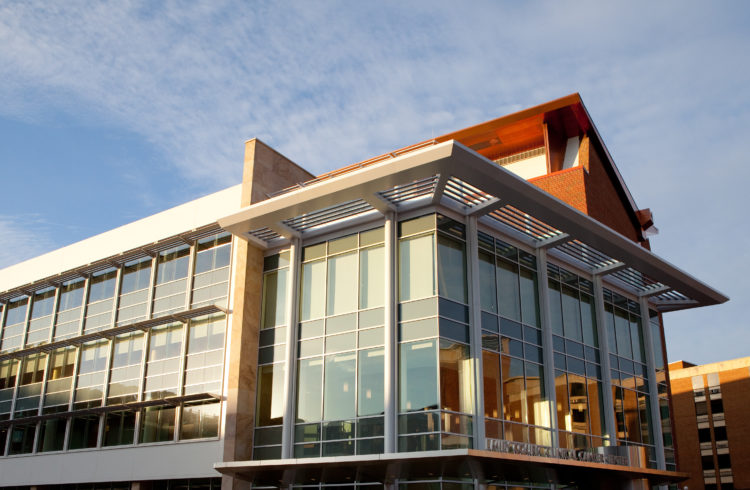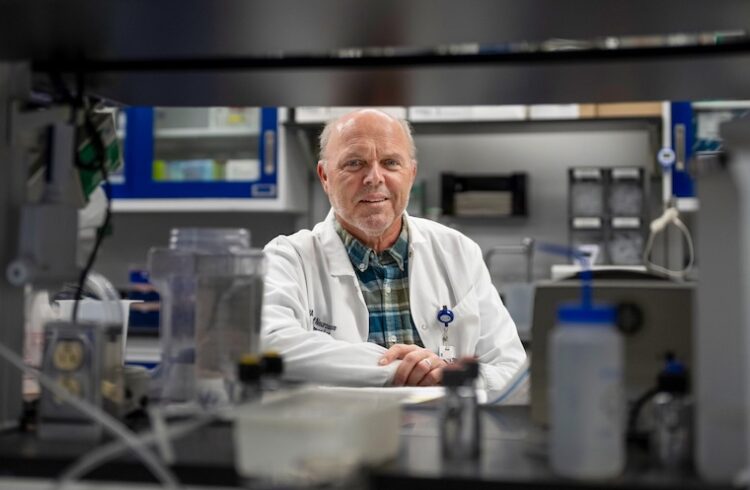
The Department of Molecular Physiology and Biological Physics at the University of Virginia School of Medicine is hosting the 42nd Mid-Atlantic Macromolecular Crystallography Meeting (MAMCM) from Thursday, May 31, to Saturday, June 2. More than 200 researchers from 46 institutions and 16 states are gathering at UVA to discuss the latest technical advances and research results in structural biology. On Saturday, two workshops will provide researchers hands-on use of cutting-edge equipment and structure-determination software. Robert Kretsinger, PhD, founder of the MAMCM in 1970 and a Professor in the Department of Biology, will help kick off the meeting.
What is macromolecular X-ray crystallography? Proteins are referred to as macromolecules because they contain thousands of atoms, connected as a linear string of amino acids that fold into a precise three-dimensional structure. It is the interplay of proteins, nucleic acids and small molecules that makes life possible. X-ray crystallography offers the best glimpse at the complexity of cellular machinery at the atomic level. The process begins by bombarding crystals of macromolecules with a focused beam of X-rays. Computational analysis of the scattering patterns yields a three-dimensional model showing the precise location of all the atoms in the crystallized macromolecule.
X-ray crystallography has yielded 26 Nobel Prizes to 41 persons. Wilhelm Röntgen discovered X-rays in 1895. During the first half of the 20th century, X-ray crystallography was used to determine the atomic structures of molecules such as NaCl, benzene and penicillin. In 1953, the inception of “structural biology” occurred with the determination of the structure of the nucleic acid DNA, for which Francis Crick, James Watson and Maurice Wilkins were awarded the Nobel Prize in 1962. Over the last 50 years, 15 additional Nobel Prizes have been awarded for X-ray crystallography of proteins and nucleic acids. Recent Nobel Prize-winning discoveries include the structure determination of the ribosome, the molecular machine that synthesize all proteins in our cells, as well as structures of membrane channel proteins that mediate the movement of potassium and water in and out of cells.
The impact of structural biology in drug discovery. In 1970, the field of macromolecular crystallography was still in its infancy, and only five proteins had been examined at atomic resolution – hemoglobin, the protein that carries oxygen in our bloodstream; the muscle protein myoglobin; lysozyme; ribonuclease; and papain, followed by insulin in 1971. Two years after the first MAMCM, the Protein Data Bank (PDB) was launched as a repository for all atomic resolution structures of macromolecules. All structures are freely available to scientists throughout the world, and the PDB now contains 82,000 entries for 46,000 different proteins. The macromolecular structures have revealed enormous insight into the chemistry of living systems and human biology. The models are essential for drug design and drug discovery and have provided key insights into drug treatments for cancer, heart disease, diabetes and AIDS.
The 42nd MAMCM is sponsored by 14 companies, the Office of the Vice President for Research at UVA, the Departments of Molecular Physiology & Biological Physics and Biochemistry & Molecular Genetics in the UVA School of Medicine, and the Department of Chemistry in the UVA College of Arts & Sciences. Complete details of the meeting and the sponsor list can be found at http://www.mid-atlantic.org/ .


